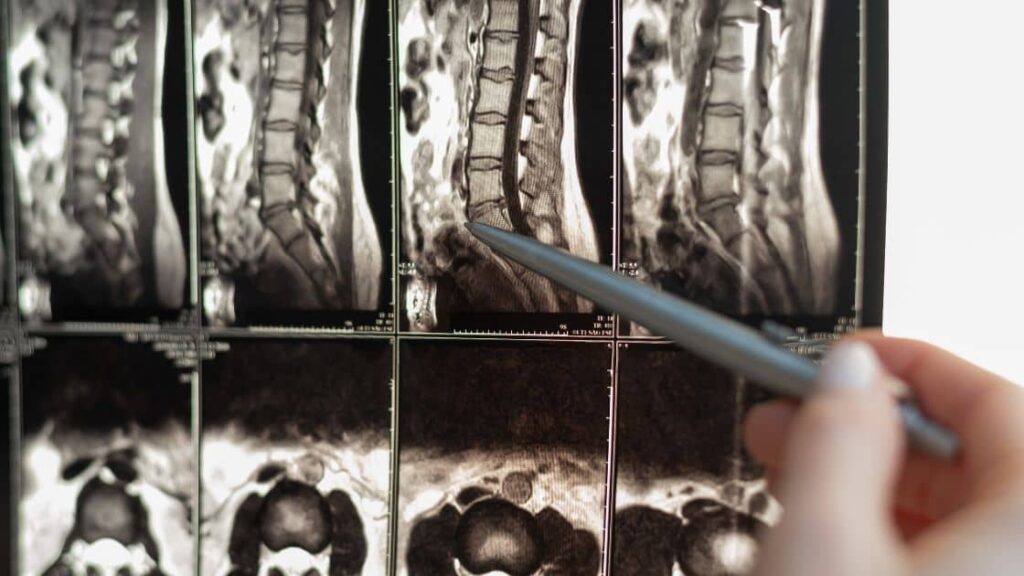When we experience spinal cord injuries, the effects can be devastating. The spinal cord is a crucial part of our nervous system, connecting our body to the brain through a complex network of nerves that control our movements. The severity and location of the injury, also known as the level of the injury, can result in symptoms ranging from difficulty breathing to complete paralysis or loss of movement. These injuries can occur in accidents or due to someone else’s negligence and can often cause permanent changes in body functions, including bowel function, and require legal action to seek compensation.
Catastrophic Spinal Cord Injuries: Why You Need a Lawyer
If you have sustained a spinal cord injury due to someone else’s actions, you may be entitled to file a lawsuit and receive compensation. It is essential to consult with an experienced personal injury lawyer who can guide you through the legal process and help you obtain the compensation you deserve. The compensation may cover medical expenses, lost wages, and pain and suffering caused by the injury.
What is a spinal cord injury, and how does it happen?
A spinal cord injury occurs when there is damage to the spinal cord, resulting in a loss of function or sensation. This can be caused by traumatic events such as car accidents, falls, or sports injuries. Medical conditions like tumours or infections can also induce it.

Common spinal injury causes
According to a Canadian study, car accidents are one of the most common causes of spinal cord and back injuries. These injuries can have a significant impact on the lives of those affected, resulting in long-term disability, chronic pain, and even paralysis. The most common spinal cord and back injuries caused by car accidents include:
- Herniated discs: a spinal cord hernia occurs when the soft cushion between the vertebrae in the spine becomes damaged and puts pressure on the spinal cord or nerves, resulting in pain, numbness, and weakness. This condition is also known as a slipped disc or ruptured disc and can be caused by age-related wear and tear on the spine, repetitive movements, or sudden injuries. The symptoms of a herniated disc can vary depending on where it occurs in the spine, but common signs include shooting pain down one arm or leg, muscle weakness, and tingling sensations. Treatment options for herniated discs include physical therapy, medication, and surgery in severe cases.
- Fractured vertebrae: Vertebral fractures can result in excruciating pain and restrict movement, making daily activities difficult. In some cases, surgery may be necessary to address the issue. Fractures in the vertebrae can occur due to osteoporosis or trauma, and it is important to seek medical attention promptly if you suspect a fracture. Treatment options may include pain management, physical therapy, and, in severe cases, surgical intervention to stabilize the spine and prevent further damage.
- Spinal cord compression: Spinal cord compression occurs when the spinal cord is compressed or squeezed due to trauma during a car accident, leading to severe complications like loss of sensation, paralysis, and other related issues. Symptoms include back pain, limb numbness, muscle weakness, and difficulty walking. Early diagnosis and treatment are crucial in managing spinal cord compression to prevent further damage and improve patient outcomes. Treatment options may include medication, physical therapy, surgery, or a combination of these approaches, depending on the severity of the condition.
- Whiplashes: Whiplash is an injury often resulting from sudden and forceful back-and-forth head movements, damaging the neck and upper spine. It is a common injury that can cause significant pain, stiffness, and limited range of motion. In addition to these symptoms, whiplash can cause headaches, dizziness, and fatigue. While it is most commonly associated with car accidents, this injury can occur in any situation with a sudden impact or jolt to the head or neck. Seeking prompt medical attention and following a prescribed treatment plan can help manage the symptoms of whiplash and promote healing.

Aside from car accidents, other common causes that cause spinal cord injuries include:
- Falls
- Acts of violence (gunshot and stab wounds)
- Sports/physical activity
- Medical and surgical procedures/malpractices, typically involving the neck and back
- Intoxication
- Disease
Does the risk of spinal cord injuries increase with age?
Contrary to popular belief, the risk of spinal cord injuries does not increase with age. However, individuals between 16 and 30 are more prone to such injuries. Falls pose a greater risk to older adults, with the severity of injuries increasing in those aged 65 and above. Men are more likely to suffer from traumatic spinal cord injuries than women, with acts of violence such as gunshot wounds being a common cause. Understanding these trends can help healthcare providers create targeted prevention strategies and tailor treatment plans based on the patient’s age and gender. Additionally, advancements in trauma care have greatly improved the outcomes for those who experience spinal cord injuries.

For example, older adults can benefit from fall prevention education, while younger individuals may need awareness about risky behaviours like diving into shallow water or driving recklessly. Additionally, it’s important to address the mental health effects of spinal cord injuries, as they can have major impacts on a person’s well-being. This includes an increased risk of developing conditions like depression and a higher likelihood of dying by suicide.
Spinal Cord Injuries Caused by Negligence
Negligence is often a significant cause of spinal cord injuries, which can result in severe and long-term consequences. For the plaintiff to claim negligence, they must prove that the defendant’s actions or inactions caused the injury. For instance, if an accident was caused by a driver who ran a stop sign and collided with another vehicle, resulting in a spinal cord injury to one of the passengers, the injured party could claim negligence.
Medical malpractice
Similarly, medical malpractice can also lead to spinal cord injuries. Medical malpractice occurs when a healthcare professional fails to meet or breaches the standards of care during treatment or procedures, resulting in harm or death. If you received negligent medical care that led to a spinal cord injury, you may be entitled to compensation under medical malpractice law. Seeking legal action in cases like these can help victims recover damages for their losses and provide them with financial support for their recovery through the collaboration of a well-coordinated healthcare team.
Here are some examples of medical malpractice that have caused spinal cord injuries in the past:
- Failure to properly diagnose and treat spinal cord infections
- Surgical errors during spinal cord surgeries
- Anesthesiology errors leading to spinal cord damage
- Mismanagement of spinal cord injuries, such as delayed diagnosis or improper treatment
- Medication errors leading to spinal cord damage

If you or a loved one has suffered a spinal cord injury due to medical malpractice, it is important to understand your legal rights and options. Contact a qualified personal injury attorney to discuss your case and seek the compensation you deserve.
Spinal cord injuries caused by defective products
Spinal cord injuries can sometimes result from a defective product. If a product malfunctions and causes injury, the injured party may hold the manufacturer accountable for damages. However, if a company can prove that a product was intentionally misused or mishandled by the plaintiff, it may be able to avoid legal repercussions.
What are defective products?
Defective products are inherently dangerous due to design flaws, manufacturing defects, or inadequate warnings. In the context of spinal cord injuries, defective products can include medical devices, vehicles, and consumer goods that can cause harm when used as intended. Some real-life examples of faulty products that have caused spinal cord injuries include:
- Defective airbags that fail to deploy or deploy too forcefully cause severe whiplash or spinal cord trauma.
- Medical implants, such as defective metal-on-metal hip replacements, can cause metal poisoning or lead to serious complications requiring additional surgeries.
- Faulty power tools that malfunction and cause serious injuries to the user’s spine, neck, or back.
- Dangerous medications that can cause spinal cord injuries due to side effects or improper dosage.
- Defective sports equipment, such as helmets, fail to protect the player from impact and result in spinal cord injuries.

It is worth noting that proving intent is often challenging and requires significant evidence. It is also important to remember that manufacturers must create safe products for consumers to use as intended. If they fail to meet this duty, they may be liable for any injuries or damages. In cases where spinal cord injuries occur due to defective products, it is crucial to seek legal advice from an experienced attorney who can guide you through the complex process of seeking compensation.
Do you need a lawyer specializing in spinal cord injuries?
While OHIP covers many medical costs associated with spinal cord injuries in Ontario, not all expenses are covered. In some cases, seeking compensation to cover expenses or loss of income due to negligence, insurance issues, or other legal matters may be necessary. If you find yourself in this situation, hiring a lawyer who specializes in spinal cord injuries and can guide you through the legal process and help you get the compensation you deserve is advisable.
A skilled lawyer can also provide valuable advice on dealing with insurance companies and navigating the legal system’s complexities.
Choosing a lawyer with experience in handling spinal cord injury cases and working with other healthcare professionals such as physical and occupational therapists, social workers, and psychiatrists is important to ensure you receive the best possible outcome and have a strong healthcare team supporting you.
Personal injury lawyers and those specializing in spinal cord injuries will be the most helpful. They are familiar with the medical and legal complexities unique to lawsuits involving catastrophic or severe impairments and injuries.
How to Reduce the Risk of a Spinal Cord Injury?
Preventing spinal cord injuries is crucial, and there are several steps you can take to reduce your risk. Firstly, avoiding high-risk activities and behaviours that could lead to injury is essential. When it comes to spinal cord injuries, it’s important to take all necessary precautions to prevent them from happening. Here are some key actions you can take to protect yourself:
- Wear appropriatesafety gear, such as helmets, seat belts, and pads.
- Follow the rules and guidelines, like avoiding diving in shallow waters or prohibited areas.
- Drive safely and avoid reckless behaviour on the road.
- Take precautionswhen playing sports, such as warming up properly and using protective equipment.
- Maintaining adequate blood pressure.
These simple steps can make a big difference in reducing your risk of spinal cord injuries. And if you do suffer a spinal cord injury due to someone else’s negligence, it’s important to know your legal rights and seek appropriate compensation.

In addition to these precautions, maintaining good posture and engaging in exercises that strengthen the muscles surrounding the spine can help prevent spinal cord injuries and improve muscle tone. It is also important to seek immediate medical attention if you experience any symptoms of spinal trauma, such as loss of sensation or movement.
Occupational therapy is another type of therapy that can aid in recovery from a spinal cord injury.
Despite their physical limitations, occupational therapy helps individuals learn new ways of performing daily tasks, including muscle movement and bladder control. For more severe injuries, treatment may also include observation and medical management in the intensive care unit (ICU). Occupational therapy is another type of therapy that can aid in recovery from a spinal cord injury, specifically by helping individuals redevelop fine motor skills needed for activities of daily living. Understanding the anatomy and function of the cervical spine is crucial in diagnosing and treating spinal cord injuries.
Lastly, educating yourself about spinal cord injuries and their prevention can go a long way in reducing your risk. By staying informed about the causes and consequences of these injuries, you can make informed decisions that prioritize your health and safety.
What to do immediately after an accident involving spinal cord injuries?
Here are some important actions to take:
- Call for emergency medical assistance right away.
- Avoid moving the injured person unless necessary to prevent further harm.
- If possible, document the accident scene by taking photos or videos.
- Collect contact information from any witnesses to the accident.
- Notify your insurance company about the accident.
- Seek legal assistance from a qualified attorney who specializes in spinal cord injuries.
By following these steps, you can help ensure that the injured person receives necessary medical attention and that your legal rights are protected.
* This article was updated on January 19, 2024.


